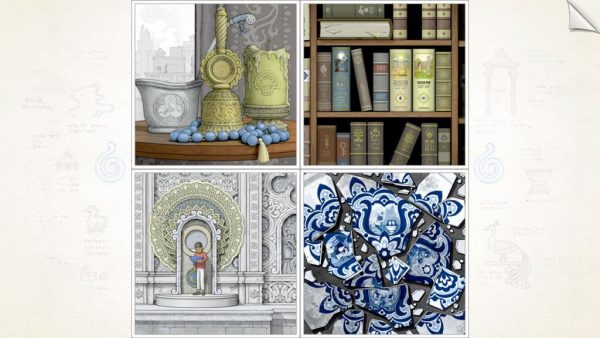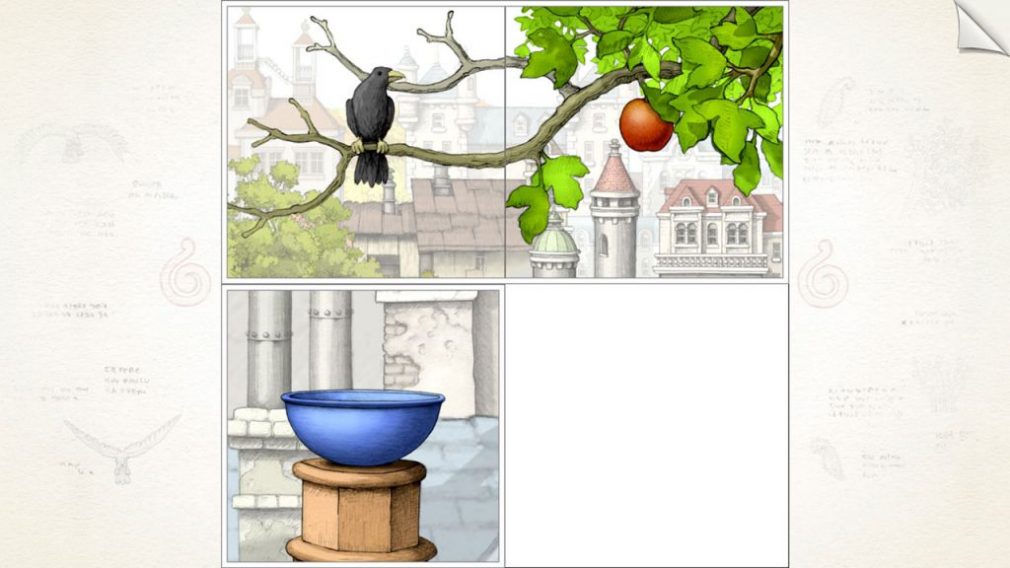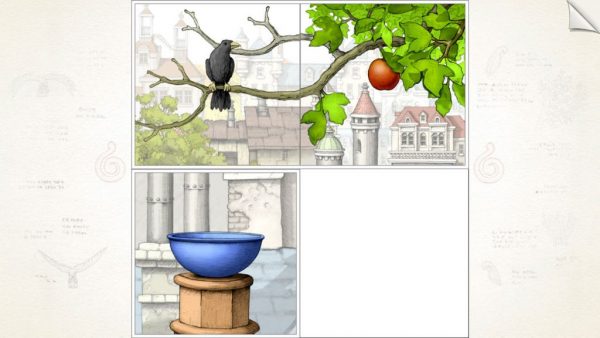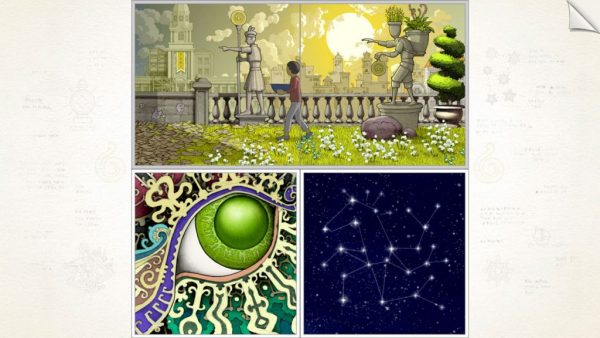Also On: PS4, PC, Switch
Publisher: Annapurna Interactive
Developer: Jason Roberts
Medium: Digital
Players: 1
Online: No
ESRB: E
If you’ve ever wondered what a hand-crafted, artisanal video game might look like, wonder no more: Gorogoa is precisely that.
That, I’ll admit, is a pretty snarky way of looking at Gorogoa, and it makes the game sound like some kind of hipster fetish item — when, it reality, the former is undeserved, and the latter is untrue. Gorogoa is so earnest and heartfelt that it’s probably the opposite of a hipster game, to the point that treating it with snark seems almost cruel.
See, Gorogoa is the result of developer Jason Roberts drawing thousand of illustrations by hand, and turning them into a video game. It’s pretty clear from the get-go that Roberts put his heart and soul into making these images jump off the screen, and there’s not a moment that goes by where you won’t feel at least a little bit impressed by the level of detail, to say nothing of how pretty everything looks.
Of course, as is the case with even the shiniest, most polished entry in an AAA franchise, there’s a lot more to a game than its graphics. There needs to be compelling gameplay…and, on that front, Gorogoa isn’t quite as easy to recommend.
For starters, it’s very short, and doesn’t have a lot of replay value. You can get through the whole thing in about an hour, and once it’s all done, you won’t have much reason to go back and play it again, apart from wanting to see all the gorgeous drawings.
On top of that, while I’m sure that Roberts has a pretty clear idea of the story he’s trying to tell, I’m afraid it’s less clear to me as a player. Or, more accurately, even if I do get it for the most part (I think), I’m having a much harder time getting into it. You obviously don’t need to be into the story to want to play Gorogoa, but I’m sure that it helps. Instead, you’re just left with a series of pretty pictures — which is more than most games offer, but that’s hardly enough to justify a purchase.
Gorogoa’s biggest problem, though, is also its most basic: it’s a puzzle game in which the puzzles aren’t all that interesting. It’s lots of moving pictures around to trigger events, and then watching as the story moves forward. When the cutscene ends, it’s on to moving around the next pictures. There’s some skill involved, but not much — there were multiple times where I was able to figure out what to do next just by clicking around until things happened. In this respect, in fact, I’d say that part of Gorogoa’s problem (or, more accurately, part of my problem with Gorogoa) is that it’s not really a puzzle in the traditional, video game sense of the word. Rather, it harkens back to jigsaw puzzles, where you usually move pieces around until things start to make sense. It’s the same thing here, more or less.

Which means, ultimately, that you’ll have to decide what you want from Gorogoa before you go into it. If you want a mind-bending puzzle game along the lines of, like, Portal or something, it’s not going to deliver that, and you’ll want to stay away. If, however, you want a gentle puzzle game with heartfelt visuals, that will remind you of life pre-gaming, then Gorogoa offers a solid — if brief — experience.
Annapurna Interactive provided us with a Gorogoa Xbox One code for review purposes.



